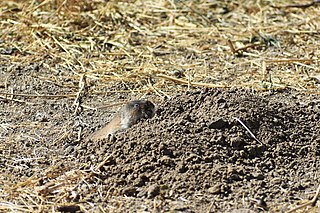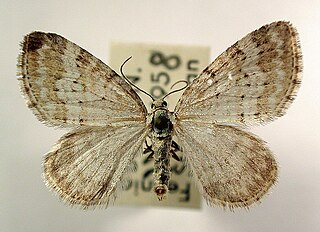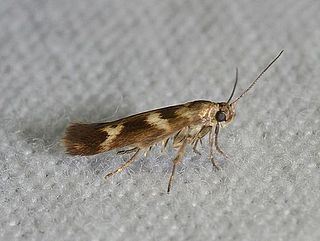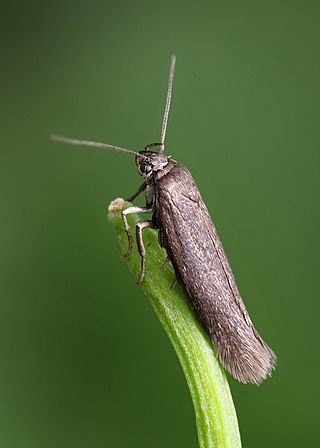
The sycamore is a moth of the family Noctuidae. The species was first described by Carl Linnaeus in his 1758 10th edition of Systema Naturae. It is distributed through most of Europe, from central England south to Morocco. To the east it is found from the Near East and Middle East to western Asia.

The Brazilian big-eyed bat is a species of phyllostomid bat from South America. The scientific name honours Italian naturalist Giacomo Doria.

The white-throated round-eared bat is a bat species found from Honduras to Bolivia, Paraguay and Brazil. It creates roosts inside the nests of the termite, Nasutitermes corniger. It thrives on a mainly insect-based diet, focusing on the surfaces of foliage to hunt, and also eats fruit and pollen. It has a very wide range and is a common species over much of that range, so the International Union for Conservation of Nature has assessed its conservation status as being of "least concern".
The Zulu serotine, also called the Zulu pipistrelle, aloe bat, or aloe serotine, is a species of vesper bat found in Angola, Botswana, Democratic Republic of the Congo, Ethiopia, Kenya, Malawi, Namibia, South Africa, South Sudan, Uganda, Zambia, and Zimbabwe. Its natural habitats are savanna and hot deserts.

The Zaisan mole vole, or eastern mole vole, is a species of rodent in the family Cricetidae. It is found in central Asia.

Hildegarde's broad-headed mouse or Hildegarde's zelotomys, is a species of rodent in the family Muridae. It is found in Central Africa.

Perizoma albulata, the grass rivulet, is a moth of the genus Perizoma in the family Geometridae. The species was first described by Michael Denis and Ignaz Schiffermüller in 1775.

Agriades orbitulus, the alpine argus, is a butterfly of the family Lycaenidae. It is a high altitude species found in the Alps, the mountains of Norway and Sweden, the Urals, the Himalayas and across central Asia.

Cosmopterix clemensella is a moth of the family Cosmopterigidae. It is known from Canada and the United States.

Cochylichroa atricapitana, the black-headed conch, is a moth of the family Tortricidae. It is found in China (Xinjiang) and the eastern Palearctic and most of Europe.

Scythris petrella is a moth of the family Scythrididae. It is found on the Canary Islands.

Caryocolum schleichi is a moth of the family Gelechiidae. It is found in central, most of western and parts of eastern Europe, Morocco, Turkey, Syria, Afghanistan and Mongolia.

Scythris cicadella, the sand owlet, is a moth of the family Scythrididae found in Europe. It was first described by Philipp Christoph Zeller in 1839.

Scythris inspersella, the Norfolk owlet, is a moth of the family Scythrididae, first described by the German entomologist Jacob Hübner in 1817. It has a Holarctic distribution.
Scythris laminella is a moth of the family Scythrididae. It was described by Michael Denis and Ignaz Schiffermüller in 1775. It is found in most of Europe and Central Asia.

Scythris trivinctella, the banded scythris moth, is a moth of the family Scythrididae. It is found in North America, where it has been recorded from New England to Florida, the Great Plains states, Texas to Arizona and south into Mexico, Utah, eastern Oregon and north into southern British Columbia.
Scythris pseudarachnodes is a moth of the family Scythrididae. It was described by Bengt Å. Bengtsson in 1997. It is found on the Canary Islands (Tenerife).
Scythris caballoides is a moth of the family Scythrididae. It was described by Kari Nupponen in 2009. It is found in Uzbekistan. The habitat consists of riverside woods, surrounded by desert steppes.
Scythris hemidictyas is a moth of the family Scythrididae. It was described by Edward Meyrick in 1928. It is found in North America, where it has been recorded from Texas.

Scythris picaepennis is a moth of the family Scythrididae first described by Adrian Hardy Haworth in 1828. It is found in Europe.














